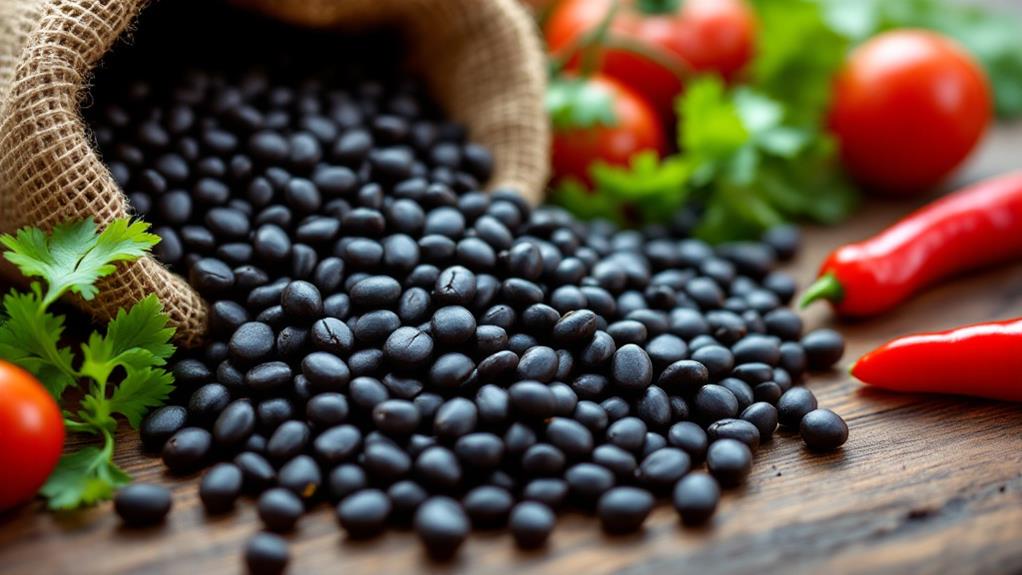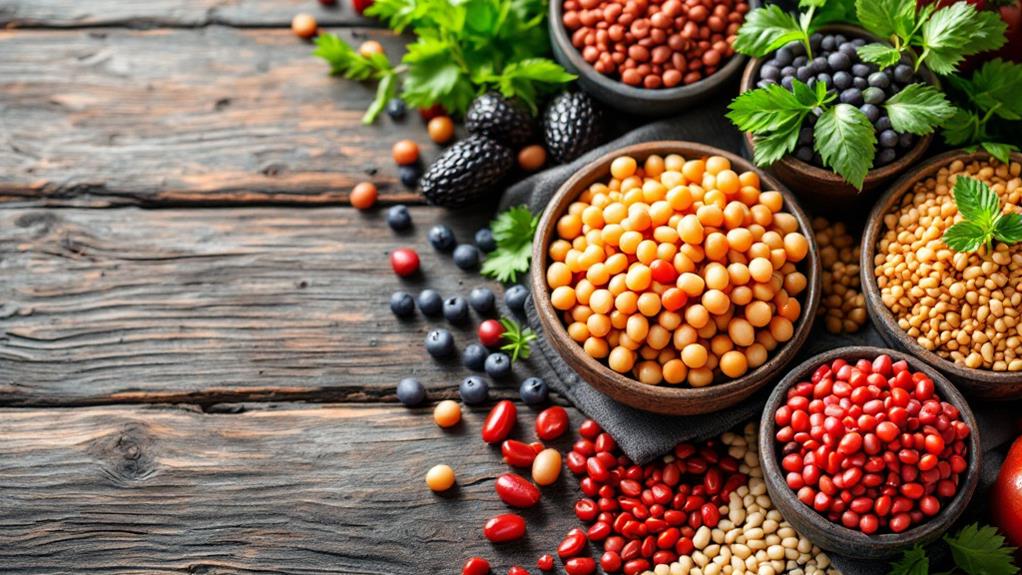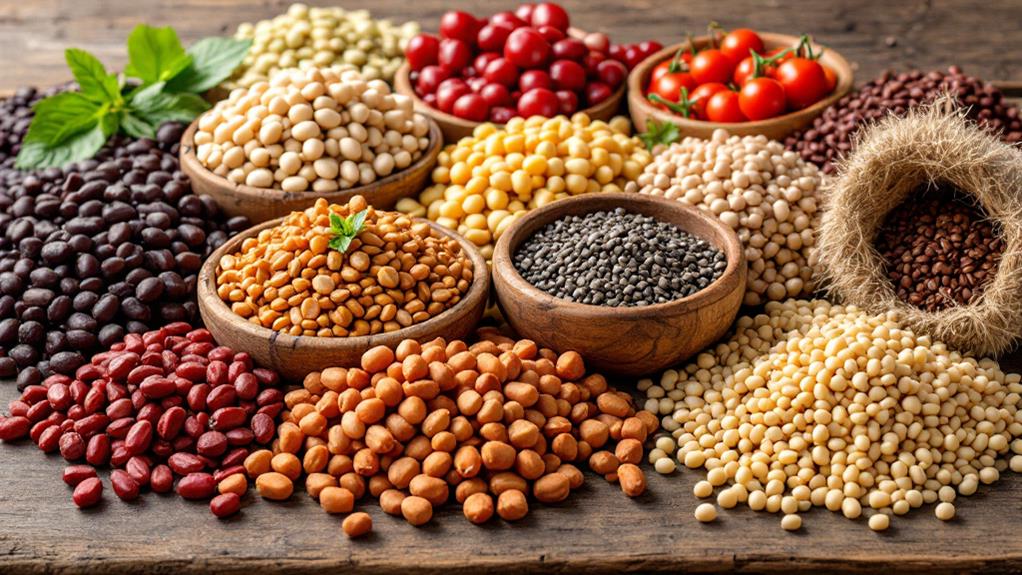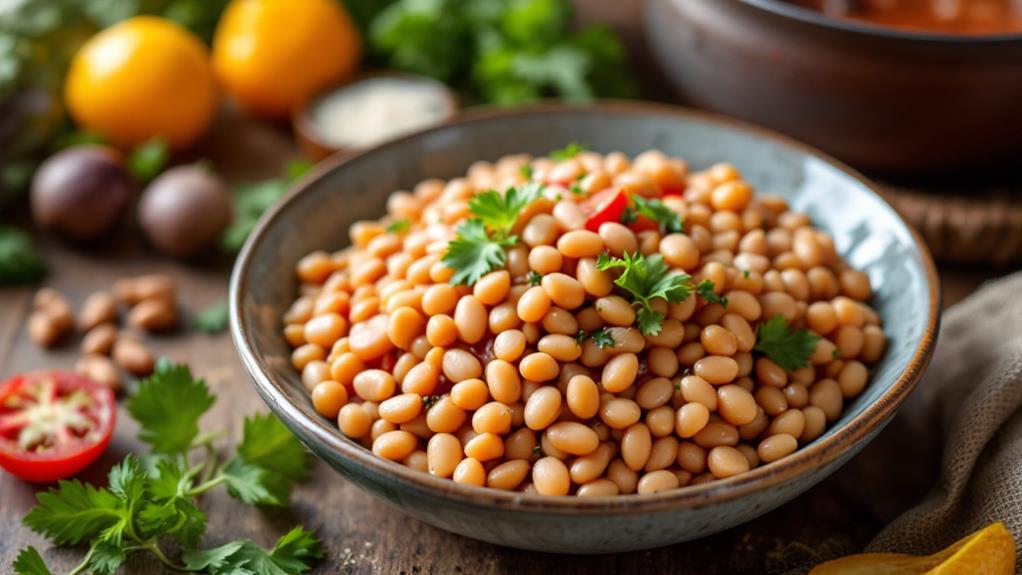The Ultimate Guide to Beans and Legumes: Types, Benefits, and Uses
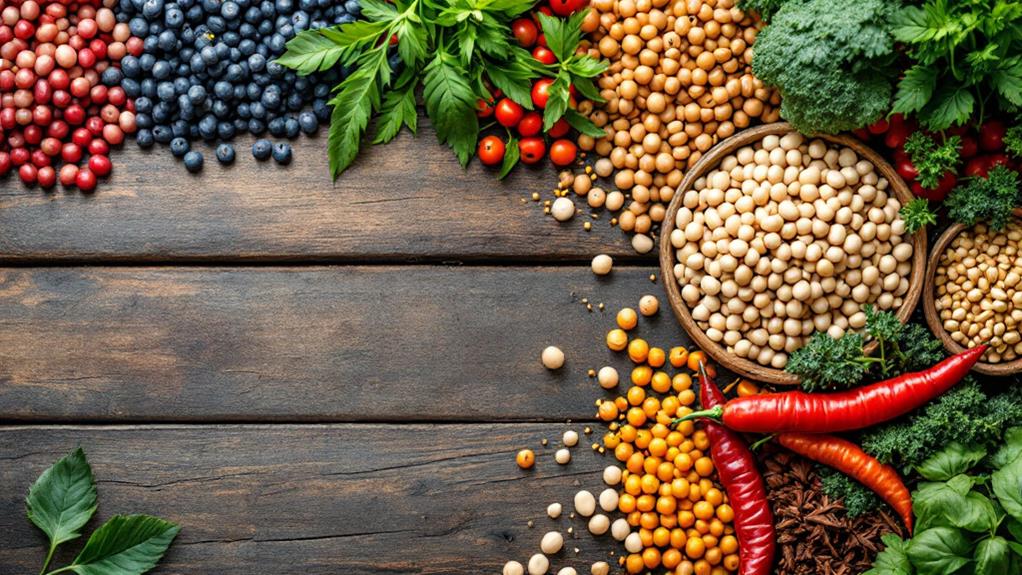
You'll find beans and legumes incredibly versatile and nutritious, perfect for enhancing any dish. They include varieties like chickpeas, lentils, and soybeans, each offering unique flavors and textures. High in protein and fiber, these foods support heart health, aid digestion, and manage blood sugar levels. Cooking with them is simple; soak to reduce cooking time or use canned for convenience. They're vital in soups, stews, salads, and even as meat substitutes. Proper storage extends their shelf life, ensuring you always have these nutritional powerhouses on hand. Uncover more about their countless benefits and culinary uses.
Understanding Beans and Legumes
In the domain of nutrition, understanding beans and legumes is vital due to their extensive variety and health benefits. As members of the Fabaceae family, legumes encompass the entire plant, while pulses refer specifically to the edible seeds, such as beans. These nutrient-rich foods are celebrated for their high protein and fiber content, necessary vitamins, and minerals. They're low in fat and cholesterol, making them an excellent choice for a balanced diet.
You might be surprised to learn that there are over 18,000 species of legumes worldwide, including popular varieties like chickpeas, lentils, black beans, and pinto beans. This diversity enables you to incorporate them into a wide range of dishes. Regardless of you're adding them to soups, tossing them in salads, or blending them into dips, you're making a nutritious choice.
Regular consumption of legumes brings numerous health benefits. They support improved digestive health and can help lower blood pressure. Moreover, they're linked to a reduced risk of chronic diseases. By including beans and legumes in your diet, you're not only enhancing your meals but also contributing positively to your general health. Accept the versatility and nutritional power of these extraordinary foods!
Key Varieties Explored
As you investigate the rich world of beans and legumes, you'll encounter a fascinating array of key varieties, each offering unique flavors and culinary possibilities. Among these, beans are available in types like pinto, black, navy, kidney, and cannellini. Each type brings its own flair to dishes—pinto beans are perfect for frijoles charros, while black beans shine in Cuban cuisine. The legume family includes not just beans but also lentils, peas, and soybeans, each with its distinct characteristics.
Lentils, high in protein and fiber, come in brown, green, red, and black varieties. They're quick to cook and ideal for hearty soups, stews, and salads. Peas, such as green peas, snow peas, and black-eyed peas, offer a starchy sweetness. Fresh peas peak in spring, but frozen ones are a better choice than canned for preserving flavor.
Black-eyed peas, creamy and drought-resistant, are a staple in Southern U.S. cuisine, often seen in Hoppin' John. Finally, soybeans stand out for their high protein content and versatility, known to support heart health and potentially reduce cancer risk. Each variety contributes richly to diverse culinary experiences.
Nutritional Benefits
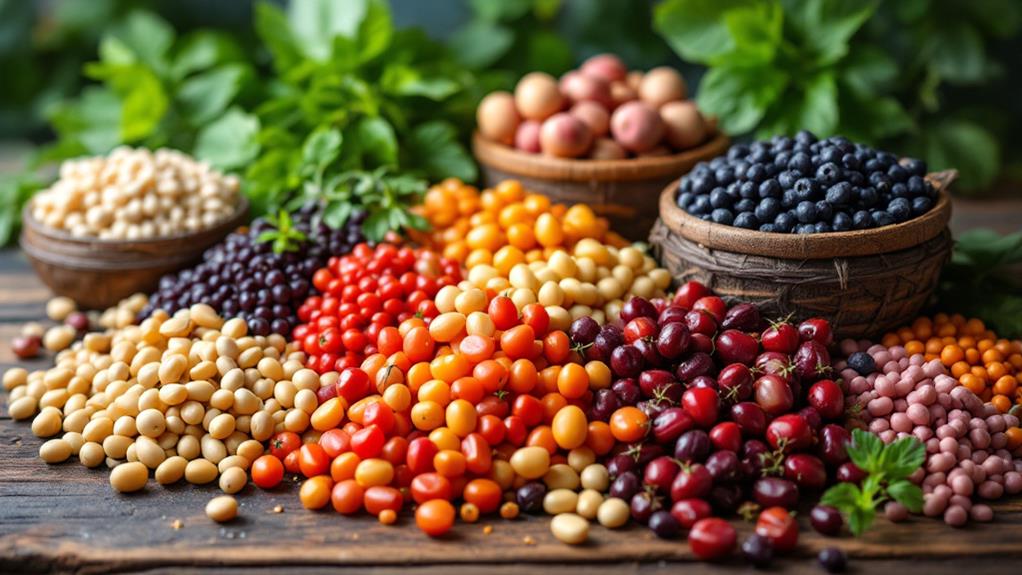
Beyond their rich flavors and versatility, beans and legumes pack a powerful nutritional punch. They're not just tasty, but they're also a powerhouse of nutrients that can considerably benefit your health. Initially, beans are great because they're high in protein, making them an ideal choice for vegetarians and vegans seeking plant-based protein sources. For example, a cup of cooked chickpeas provides about 14.5 grams of protein.
Next, the nutritional profile of legumes includes high dietary fiber content, which is vital for digestive health and cholesterol management. A cup of cooked lentils delivers approximately 15.6 grams of fiber, helping you maintain a healthy digestive system.
Here's a quick breakdown of why you should incorporate more legumes into your diet:
- Protein Powerhouse: High in protein, providing fundamental amino acids.
- Fiber Rich: Excellent for digestive health and cholesterol reduction.
- Vitamin Boost: Packed with fundamental vitamins, like folate, supporting general health and fetal development.
- Heart Healthy: Low in fat and cholesterol-free, reducing cardiovascular disease risk.
Moreover, the regular consumption of these nutritious gems can improve your metabolic health, including better blood sugar control, making them an indispensable part of a balanced diet.
Cooking Techniques
Mastering the art of cooking legumes can transform your culinary experience and improve your dishes to new heights. Start by soaking dried legumes for several hours or overnight. This softens their seed coats, reducing cooking times, and minimizes digestive discomfort caused by gas-producing compounds. For lentils and split peas, you can skip soaking since they generally cook faster.
Cooking times for legumes vary greatly. Most types need 30 minutes to 2 hours, depending on their size and texture. To expedite this process, consider using a pressure cooker. It allows you to prepare dried legumes quickly without prior soaking, making meal prep more efficient.
If you're opting for canned beans, be sure to rinse them thoroughly before use. This simple step removes excess sodium, making them a healthier choice for your soups, salads, and stews. While simmering legumes, boost their flavor with aromatics such as onion, garlic, and herbs. These supplements enrich the taste, resulting in a more satisfying dish.
Storage Tips
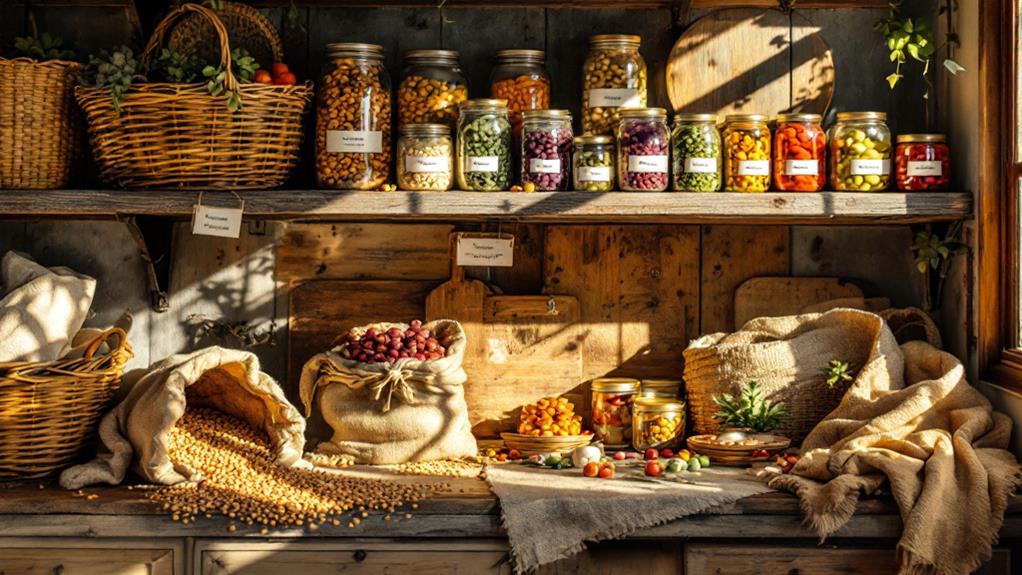
Proper storage of legumes is vital to maintaining their freshness and quality. Regarding dried legumes, you'll want to keep them in airtight containers in a cool, dry place. This prevents moisture absorption and spoilage. Before using dried legumes, inspect them for any signs of pests or spoilage to verify they're safe and of good quality.
For cooked legumes, follow these storage tips to optimize their shelf life and culinary potential. You can refrigerate them for 3-4 days, but for longer storage, consider freezing them in individual portions. This way, they can last several months and are easy to use whenever needed.
Additionally, to reduce waste, leftover cooked legumes can be creatively repurposed. Here's a quick guide:
- Repurpose: Use leftovers in salads, fritters, or dips.
- Refrigerate: Store in airtight containers for up to 4 days.
- Freeze: Portion into freezer-safe bags or containers for long-term storage.
- Inspect: Always check for spoilage before using.
Seasonal Availability
While storing legumes correctly keeps them crisp, knowing when they're at their best seasonally can improve your culinary experiences. Fresh peas, particularly shelled and sugar snap varieties, hit their peak in the spring. They're perfect for seasonal recipes that highlight their tender sweetness. As summer rolls around, you'll find an abundance of fresh green beans, including both classic green and yellow wax beans, along with fava beans. These lively legumes are rich in flavor and nutrients, making them an excellent choice for lighter, rejuvenating dishes during the warmer months.
When fall arrives, it's time to adopt heartier legumes like lentils and dried beans. The cooler temperatures make these legumes, with their rich and comforting flavors, a staple in many seasonal recipes. While fresh legumes should be enjoyed at their peak, dried beans offer incredible versatility. Chickpeas and black beans are available year-round, ensuring you have a reliable base for countless dishes, regardless of the season. Their long shelf life means you can always have them on hand, ready to enrich your meals with their dense nutritional profiles. By understanding the seasonal availability of these legumes, you'll elevate your culinary adventures year-round.
Culinary Applications
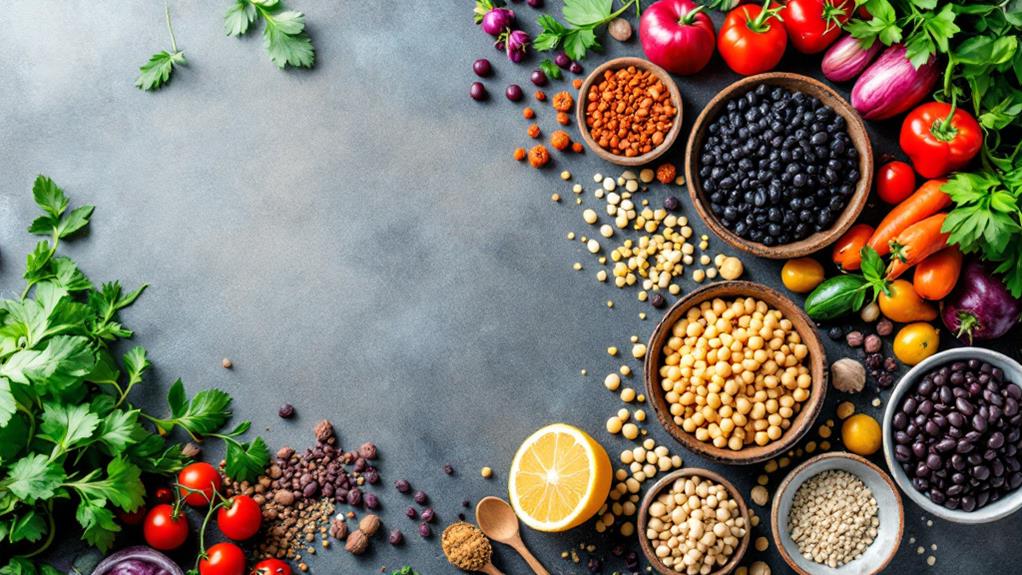
Exploring the culinary applications of beans and legumes opens up a world of possibilities in your kitchen. Beans make excellent supplements to different dishes, improving both flavor and nutrition. They're high in fiber and protein, which supports heart health and aids in weight management. You can use them in:
- Soups and Stews: Add chickpeas, black beans, or lentils to your favorite soup or stew recipes for a hearty, satisfying meal. Their unique flavors complement spices and vegetables beautifully.
- Salads: Toss some canned or cooked dried beans into salads. They add a delightful texture and elevate the protein content, making your salad a complete meal.
- Dips and Spreads: Blend legumes into spreads like hummus or bean dips. These are perfect for snacking and serve as a delicious alternative to traditional dairy-based dips.
- Meat Substitutes: Replace meat in recipes with legumes for a plant-based option. Their rich protein content makes them ideal for vegetarian and vegan dishes.
Whether you opt for the convenience of canned beans or the deeper flavors of dried ones, incorporating legumes into your meals is a simple way to improve your diet with nutritious, adaptable ingredients.
Heirloom vs. Commodity
As you experiment with beans and legumes in your culinary creations, understanding the difference between heirloom and commodity beans can improve your cooking. Heirloom beans are valued for their traditional varieties, maintaining genetic purity and offering unique flavors, colors, and textures. These characteristics often result in a more distinctive culinary experience compared to commodity beans. However, heirloom beans come with challenges—they require more care and specific growing conditions, which makes them generally more expensive and less readily available.
On the other hand, commodity beans are bred for higher yields and uniform appearance, focusing on mass production and affordability. While they may lack the flavor diversity of heirloom beans, they still serve as excellent, affordable protein sources for your meals. Their cultivation is generally easier and more widespread, making them a reliable staple in many kitchens.
Both heirloom and commodity beans have their merits. Heirloom varieties not only improve your dishes but also support biodiversity and contribute to soil health through sustainable farming practices. Meanwhile, commodity beans offer a practical and budget-friendly option. By choosing between these types, you can tailor your culinary approach to suit your tastes and values.
Accessibility Considerations
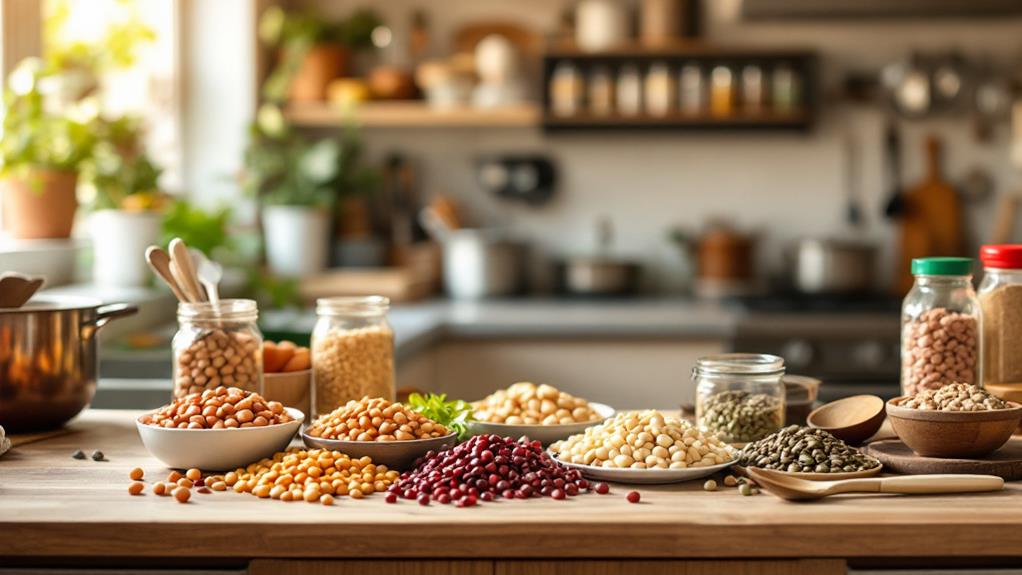
Navigating through the online domain should be like opening a familiar cookbook, accessible to everyone regardless of their abilities. Incorporating accessibility features into a website guarantees that all users, regardless of disabilities, can access the content with ease. Here's how you can improve accessibility:
- Epilepsy Safe Mode: This feature eliminates risks of seizures by removing flashing content, providing a safer browsing experience for users with epilepsy.
- Visually Impaired Mode: Improve website visuals to make text more readable for those with sight issues, using high-contrast visuals and larger fonts to improve navigation.
- Cognitive Disability Mode: Simplify content and reduce distractions to aid users with cognitive impairments, allowing them to focus better on the information.
- Compliance with WCAG 2.1 Guidelines: Adhering to these guidelines at the AA level guarantees inclusivity, making your website accessible to a wide range of disabilities.
User feedback plays an essential role in optimizing these accessibility features, helping you adapt and enhance continuously. By prioritizing these considerations, you create a welcoming digital space that invites everyone to investigate the wonderful world of beans and legumes without barriers.
Global Culinary Influence
After ensuring everyone can access your digital content, let's uncover how beans and legumes have shaped cuisines around the globe. These versatile ingredients are the heart of many global cuisines, from Mexican refried beans to Indian dal and Middle Eastern hummus. Each dish not only highlights their culinary adaptability but also their cultural significance in different regions.
In Asia, soybeans are transformed into protein-rich tofu and tempeh, perfect for vegetarian and vegan diets. These products demonstrate the legumes' adaptability and essential role in Asian culinary traditions. Meanwhile, Mediterranean diets incorporate lentils in soups and salads, emphasizing their nutritional value and contribution to heart-healthy eating.
In the Southern U.S., black-eyed peas hold a special place, particularly on New Year's Day, symbolizing good luck and prosperity. This tradition underscores the cultural importance of legumes in Southern cooking.

